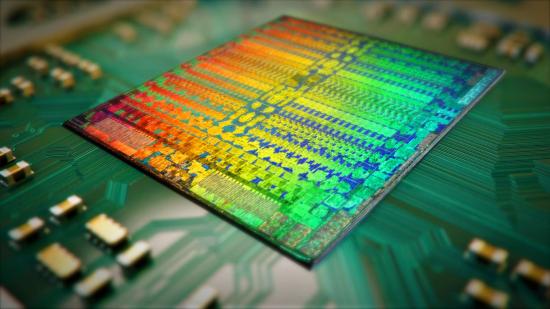Sony’s PS5 will be powered by a 36 CU (compute unit) RDNA 2 GPU running at up to 2.23GHz. On CU count alone that equates to today’s Radeon RX 5700, but the PS5 is, after all, a second-gen RDNA part, and will operate over 400MHz faster than its current compute unit compadre. That’s sure to help it along some, but all we want to know is: can PC gamers expect similarly lofty clocks with Navi 2X?
AMD has a few things in mind to bolster performance with the second iteration of its gaming-focused architecture – TSMC’s enhanced 7nm process node, for one. But the PS5’s high and mighty clock is nonetheless quite the adrenalin shot for ol’ Radeon.
We’re going to see two very different approaches from Sony and Microsoft with the first wave of consoles in the “next-generation”, even if both are bringing plenty of custom silicon to the party. The high-end Xbox Series X will feature a 52 CU GPU on the RDNA 2 architecture at a steady 1.825GHz, while Sony’s opted for something a little less colossal at 36 CUs but clocked quite a bit higher at up to 2.23GHz. So it’s not like every RDNA 2 GPU is happy above 2,000MHz.
“We’ve built a GPU with 36 CUs,” Mark Cerny says during a PS5 tech deep dive. “Mind you, RDNA 2 CUs are large, each has 62% more transistors than the CUs that we were using on PlayStation 4. So if we compare transistor counts, 36 RDNA 2 CUs, equates to roughly 58 PS4 CUs. It is a fairly sizeable GPU. Then we went with the variable frequency strategy, which is to say we continuously run the CPU and GPU in boost mode.
“Running a GPU at 2GHz was looking like an unreachable target with the old fixed frequency strategy. With this new paradigm we’re able to run way over that. In fact we have to cap the GPU frequency at 2.23GHz to guarantee on-chip logic operates properly. 35 CUs at 2.23GHz is 10.3 teraflops and we expect the GPU to spend most of its time at, or close to, that frequency and performance.”
| PlayStation 5 | Xbox Series X | |
| CPU | 8x cores @ 3.5 GHz – Custom Zen 2 CPU | 8x cores @ 3.8 GHz (3.66 GHz w/ SMT) – Custom Zen 2 CPU |
| GPU | 10 TFLOPS, 36 CUs @ 2.23 GHz custom RDNA 2 GPU | 12 TFLOPS, 52 CUs @ 1.825 GHz custom RDNA 2 GPU |
| Process | 7nm Enhanced (TSMC) | 7nm Enhanced (TSMC) |
| Memory | 16GB GDDR6 | 16GB GDDR6 |
It’s Sony’s own variable frequency approach that it’s touting as the key to maintaining its frequency. In principal that sort of approach is nothing new to PCs, but it’s also using AMD’s SmartShift technology, introduced with AMD Ryzen 4000 Renoir processors, to keep the GPU well-fed when the Zen 2 CPU is under-utilised.
Whether we’ll see clock speeds of that calibre on PC even with the cross-pollination between Sony and AMD remains to be seen. However, it’s looking like AMD’s next-generation of discrete GPUs could follow a similar core count cadence to both console chips, at least. Cerny was sure quick to mention that familiar discrete GPUs may be on the way around the same time as the PS5 launch pencilled in for the end of the year, and that’s surely our next Navi generation of graphics cards.
